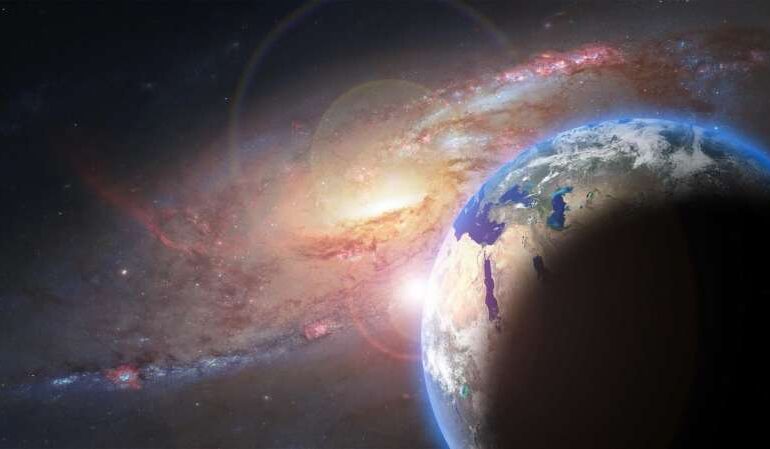New Study Reveals Theia, Earth’s Ancient Neighbor, Originated Closer to the Sun

Research conducted by the Max Planck Institute for Solar System Research and the University of Chicago has uncovered significant insights regarding Theia, the celestial body believed to have collided with Earth approximately 4.5 billion years ago. This study sheds light on Theia’s potential origins and its pivotal role in shaping the Earth-Moon system.
The catastrophic collision with Theia is widely regarded as a critical event in Earth’s history, leading to the formation of the moon. While the exact details of this collision remain elusive, researchers have leveraged data from Earth and lunar rocks to infer the characteristics of Theia. The latest findings have been published in the journal Science, revealing that Theia likely originated from an area of the solar system closer to the sun than Earth itself.
Tracing Theia’s Composition and Origins
The researchers focused on understanding Theia’s composition, which is believed to be archived in the isotopic ratios of elements found in Earth and moon rocks. Thorsten Kleine, Director at the Max Planck Institute and co-author of the study, emphasized that “the composition of a body archives its entire history of formation, including its place of origin.”
The study examined the ratios of various iron isotopes in 15 terrestrial rocks and six lunar samples collected during the Apollo missions. The results indicated a striking similarity between Earth and moon isotopes, suggesting a shared origin. However, these similarities do not provide definitive conclusions about Theia due to the myriad collision scenarios that could have occurred.
To gain deeper insights, the team employed a method akin to reverse engineering of planetary formation. They analyzed isotope ratios not only of iron but also of chromium, molybdenum, and zirconium to reconstruct possible scenarios of Theia’s size and composition.
The Implications of Theia’s Proximity
The findings suggest that the building blocks of both Earth and Theia originated primarily in the inner solar system. Timo Hopp, the lead author of the study, stated, “The most convincing scenario is that most of the building blocks of Earth and Theia originated in the inner solar system. Earth and Theia are likely to have been neighbors.”
This conclusion aligns with the idea that while Earth’s early composition can be represented by known meteorite classes, Theia’s composition may include materials that are less understood. The implications of this research could reshape our understanding of planetary formation and the early solar system dynamics.
The study proposes that Theia’s building materials might have originated from a region nearer to the sun than Earth, suggesting that the conditions for forming such celestial bodies were present in that part of the solar system.
As scientists continue to unravel the mysteries of our planetary origins, research like this is essential for piecing together the complex history of Earth and its moon. The findings underscore the interconnectedness of celestial bodies and the ongoing quest to understand our place in the universe.
More information can be found in the original study titled “The Moon-forming impactor Theia originated from the inner Solar System,” published in Science (DOI: 10.1126/science.ado0623).






